In this article, I will discuss on the Best Bank for Bridging Fiat To Stablecoins, allowing you to smoothly navigate the world of cryptocurrencies.
As stablecoins gain popularity, it’s important to select a bank that has reasonable fees, efficient processing times, and robust security measures.
The ideal bank facilitates hassle-free transitions from fiat to crypto, offering a more effective way to access the digital asset market.
Key Point & Best Bank for Bridging Fiat To Stablecoins
| Bank/Fintech | Key Point |
|---|---|
| Revolut | Digital banking app with multi-currency accounts and crypto trading. |
| BankProv | Crypto-friendly bank offering banking services to fintech and crypto companies. |
| JPMorgan Chase | Traditional banking giant offering institutional crypto services. |
| Wirex | Crypto-friendly payment platform with debit cards and crypto rewards. |
| Juno | Neobank offering crypto-integrated checking accounts and rewards. |
| Monzo | UK-based digital bank with personal and business accounts. |
| Cash App | Payment app with Bitcoin buying, selling, and transfer features. |
| Kraken Bank | Crypto-focused bank offering custody and funding services (Wyoming-chartered). |
| Silvergate Bank | Former crypto-focused bank, wound down operations in 2023. |
| Anchorage Digital Bank | Federally chartered digital asset bank offering crypto custody and financial services. |
1. Revolut
Revolut stands out as a top choice for bridging fiat to stablecoins due to its user-friendly platform and extensive cryptocurrency support.
It allows users to seamlessly exchange fiat currencies, like USD or GBP, into stablecoins such as USDC or USDT, all within its intuitive mobile app.

With competitive exchange rates and support for over 30 cryptocurrencies, Revolut simplifies the process for both novice and experienced users.
Additionally, its built-in cryptocurrency wallets and the option to spend stablecoins via a linked debit card make it highly practical for everyday use, effectively bridging the gap between traditional finance and digital assets.
Revolut Pros & Cons
Pros:
– Conversions to stablecoin can easily be made on the app.
– Fees are low and their exchange rates are competitive.
– Multi-currency accounts with fast transactions.
– Retail users and small businesses can benefit.
Cons:
– Large scale institution transaction support is limited.
– Not all countries are supported.
– There may be restrictions on some withdrawals.
2. BankProv
BankProv excels in bridging fiat to stablecoins by catering specifically to crypto-focused businesses, offering a robust infrastructure for seamless conversions.
With over 200 years of banking experience, it provides FDIC-insured accounts that support fiat deposits, which can then be used to facilitate stablecoin transactions through its partnerships with crypto platforms.
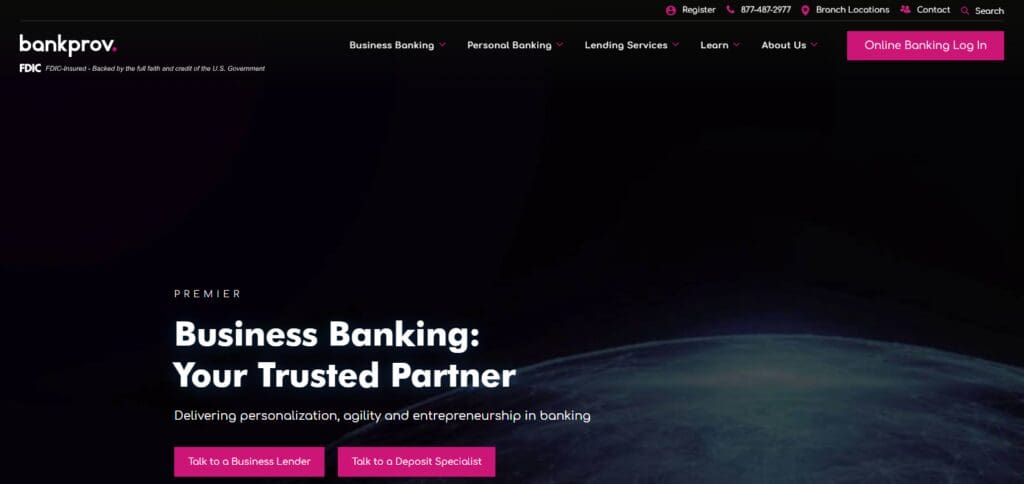
Its API banking solutions enable real-time transfers, making it easier for businesses to move between USD and stablecoins like USDC.
BankProv’s focus on compliance and security ensures a reliable bridge for enterprises needing to integrate fiat and digital currencies.
BankProv Pros & Cons
Pros:
– For an institution, direct fiat to stablecoin exchange services are available.
– API integrations makes them crypto-friendly.
– They have reliable service for business and fintech clients.
Cons:
– BankProv doesn’t service retail customers.
– Limited selection of stablecoins.
– Must undergo business verification to a certain level.
3. JPMorgan Chase
JPMorgan Chase, a titan in traditional banking, has emerged as a surprising leader in bridging fiat to stablecoins through its innovative blockchain initiatives.
Its Onyx platform and JPM Coin—a stablecoin pegged to the USD—allow institutional clients to settle transactions instantly, effectively linking fiat to digital assets.

While primarily serving large-scale clients, its infrastructure supports stablecoin integration with fiat systems, backed by advanced risk management and regulatory compliance.
This makes JPMorgan a powerful option for institutions seeking a trusted, secure bridge between the two financial worlds.
JPMorgan Chase
Pros:
- They provide institution level fiat to stablecoin services.
- Users can use JPM coin for instant cross-border transactions.
- Their security and regulation from a major bank is a big plus.
Cons:
- Currently servicing only large corporate clients.
- No access outside corporate clientele.
- They are limited in stablecoins offered (only JPM coin).
4. Wirex
Wirex offers a compelling solution for bridging fiat to stablecoins by blending traditional payment systems with crypto functionality.
Supporting over 250 digital assets, including popular stablecoins like USDC and DAI, Wirex allows users to convert fiat currencies into stablecoins quickly and securely via its app.
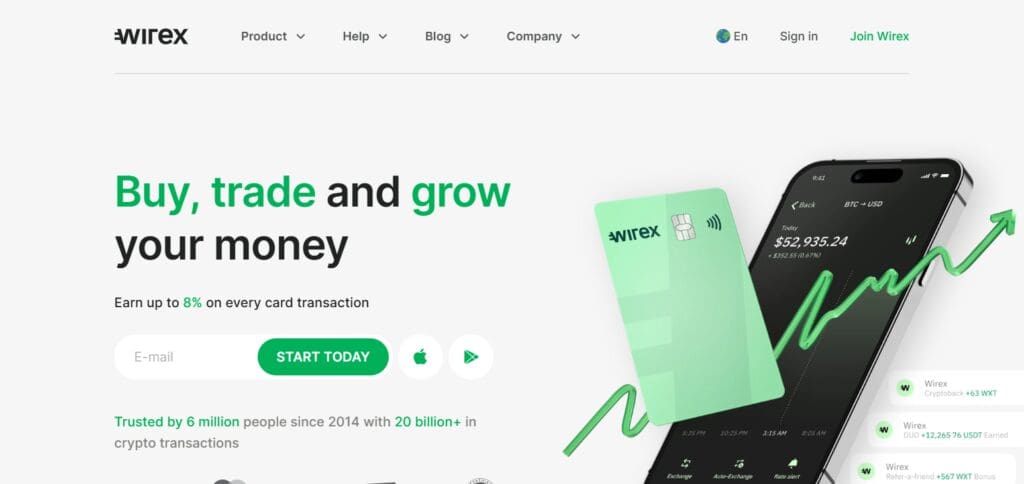
Its Mastercard-backed payment card enables spending of stablecoins in fiat-based transactions, providing a practical link between the two.
With features like zero-fee fiat-to-crypto exchanges and global accessibility, Wirex is ideal for individuals seeking flexibility in managing both currencies.
Wirex
Pros:
- Conversions from fiat to stablecoin are done directly.
- With crypto debit cards, spending becomes easier.
- They support a good amount of fiat currencies and stablecoins.
Cons:
- Compared to traditional banks, they offer higher interest rates.
- Institutional support is not very strong.
- Some limitations are placed on certain regions.
5.Juno
Juno is a standout for bridging fiat to stablecoins, particularly for those in the blockchain space, thanks to its tailored crypto-friendly banking services.
It offers FDIC-insured fiat accounts that integrate seamlessly with crypto wallets, allowing users to convert USD into stablecoins like USDC with ease.

Juno’s Smart Treasury feature caters specifically to stablecoin holders, offering savings options, while its debit card supports spending stablecoins as fiat.
This combination of innovative tools and direct crypto integration makes Juno a versatile bridge for both individuals and businesses.
Juno
Pros:
- Conversions from fiat to stablecoin are done directly.
- Low costs and real-time transactions.
- Their checking accounts are integrated with crypto.
Cons:
- Only available for users based in the USA.
- There is a continued increase in the support for stablecoins.
- Not Appropriate for Transactions of Greater Magnitude.
6. Monzo
Monzo, a UK-based digital bank, facilitates bridging fiat to stablecoins indirectly but effectively through its openness to cryptocurrency transactions.
While it doesn’t offer in-app stablecoin trading, Monzo allows users to transfer GBP to regulated exchanges like Coinbase, where fiat can be converted into stablecoins such as USDT or USDC.

Its fast payment systems and lack of fees for card transactions make it a smooth conduit for moving fiat into the crypto ecosystem.
Monzo’s user-friendly app and exchange compatibility provide a reliable, if less direct, bridge for crypto enthusiasts.
Monzo
Pros:
– Trusted as a fiat on-ramp for crypto exchanges.
– Intuitive design.
– Appropriate for UK based audience.
Cons:
– Does not offer fiat to stablecoin conversion.
– Must use third party crypto exchange.
– Basic features for crypto trading.
7. Cash App
Cash App simplifies bridging fiat to stablecoins for casual users by offering a straightforward platform to buy and sell cryptocurrencies, including Bitcoin, which can be swapped for stablecoins on supported exchanges.
Users can deposit USD via their linked bank accounts and transfer it to platforms that support stablecoins like USDC.
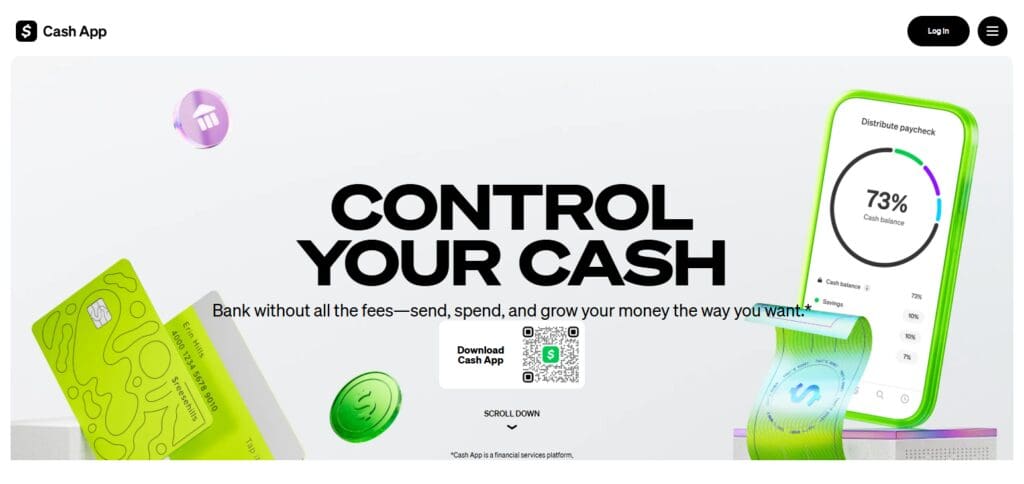
While it doesn’t directly handle stablecoin transactions, its integration with the Lightning Network and ease of fiat movement make it a convenient stepping stone.
Cash App’s accessibility and simplicity appeal to those new to bridging fiat and crypto.
Cash App
Pros:
– Hassle-free conversion from fiat to Bitcoin.
– Simple interface designed for casual users.
– Quick processing speed.
Cons:
– Stablecoins are unsupported.
– Limited selection of cryptocurrencies (Bitcoin only).
– Increased costs for purchasing cryptocurrencies.
8. Kraken Bank
Kraken Bank, an extension of the well-known crypto exchange Kraken, is poised to excel in bridging fiat to stablecoins with its upcoming banking services.
Although still in development as of March 17, 2025, it promises to offer direct fiat deposits that can be converted into stablecoins like USDT or USDC within a single platform.
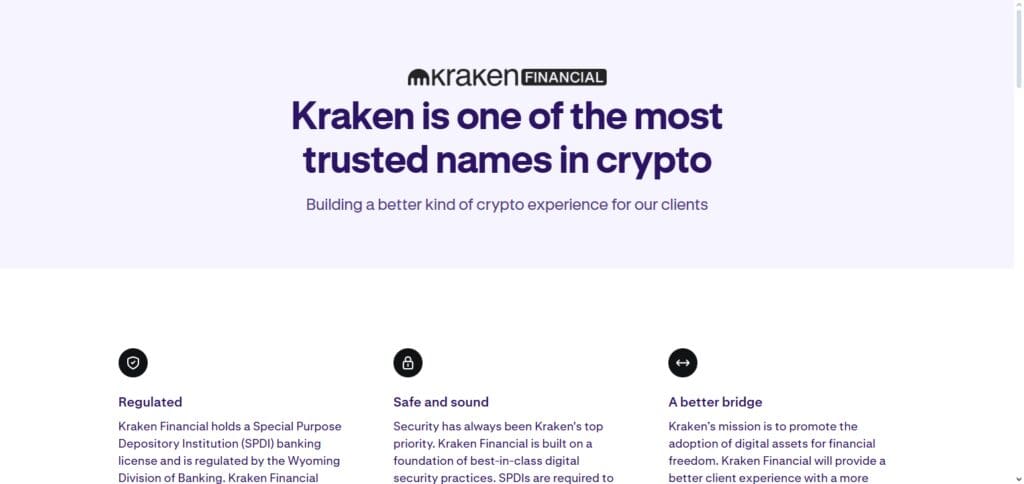
Backed by Kraken’s expertise in crypto trading and regulatory compliance, it aims to provide a seamless, secure bridge for users.
Its focus on integrating banking and crypto services positions it as a future leader in this space.
Kraken Bank
Pros:
– Offers direct conversion from fiat to stablecoins.
– Established and compliant with regulations crypto bank.
– Welcomes retail and institutional clients.
Cons:
– Available in a few states within the US only.
– Selection of stablecoins is low.
– Must have an account with Kraken exchange.
9. Silvergate Bank
Silvergate Bank has historically been a pioneer in bridging fiat to stablecoins through its Silvergate Exchange Network (SEN), which facilitates real-time USD transfers to crypto exchanges.
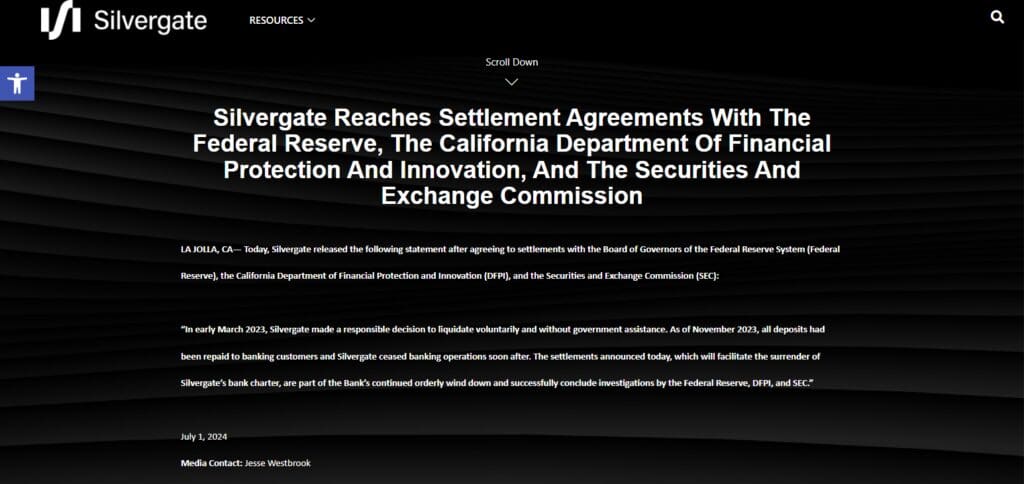
This allows users to deposit fiat and quickly acquire stablecoins like USDC or DAI. Known for its crypto-friendly approach, Silvergate provides secure, round-the-clock transaction capabilities tailored to institutional clients and businesses.
Despite past challenges, its infrastructure remains a strong bridge for those needing efficient fiat-to-stablecoin conversions in a regulated environment.
Silvergate Bank
Pros
- Used to offer instant conversion from fiat to stablecoins.
- Famous for its Silvergate Exchange Network (SEN).
- A popular choice among crypto companies at one time.
Cons:
- No longer in business (shut down in 2023).
- Services are inaccessible.
- Not useful for stablecoin services.
10. Anchorage Digital Bank
Anchorage Digital Bank bridges fiat to stablecoins by offering a unique blend of custodial services and banking under a federal charter.
As the first federally chartered crypto bank, it allows clients to deposit fiat and convert it into stablecoins like USDC, all while providing institutional-grade security and compliance.
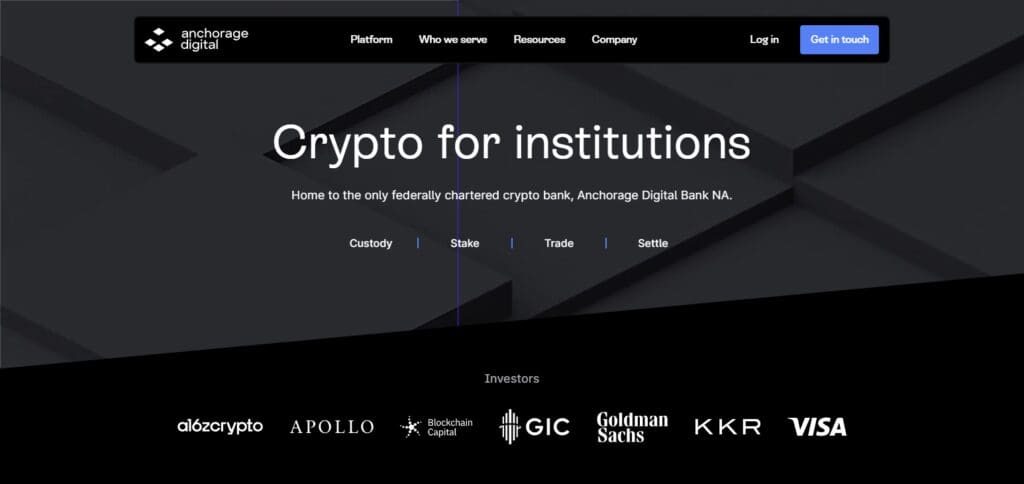
Its platform supports seamless transfers between fiat and digital assets, with a focus on safety and regulatory adherence.
Anchorage’s innovative approach makes it an excellent choice for high-net-worth individuals and institutions seeking a trusted bridge to stablecoins.
Anchorage Digital Bank
Pros:
- – Advanced level services for instutional clients.
- – Strong reputation in covering unique custody and financial services.
- – Merged as a regulated digital asset bank.
Cons
- – Exclusively for institutional investors.
- – Unavailable for retail users.
- – Small selection of stablecoins.
Conclusion
To sum it up, picking a bank for converting fiat to stablecoins takes into consideration the security, transaction speed, fees, and the currencies supported.
The most effortless solutions come from banks that provide crypto integration, low conversion costs, and great customer service.
Choosing institutions with strong regulatory compliance and partnerships with trusted crypto platforms makes the converting of fiat to stablecoins smoother and more secure.










